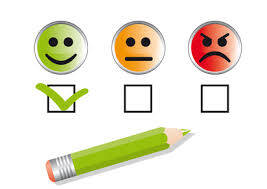

What I’m curious about, and what’s surprised me most in the years I’ve been working with this technology, are the unusual applications most people don’t even think about.
Here are three of the coolest sentiment analysis use cases I’ve come across in the last year.
1. Flyer Experience Tracking
A large airline company started monitoring tweets about their flights to see how clients were feeling about delays, upgrades, new planes, in-flight entertainment, and more. Nothing special there, except when they began feeding this information to their customer support platform (ZenDesk, I think?) and solving them in real-time.
One memorable instance occurred when a customer tweeted negatively about lost luggage before boarding his connecting flight. The airline caught the tweet, forwarded it to support, who got a representative to wait at the passenger’s destination, and offer him a free first class upgrade on the way back. They also tracked the bag, and gave him information on where the bag was, and where they would deliver it the moment he stepped off the plane. Needless to say, he was pretty stoked about it, and tweeted like a happy camper throughout the rest of his trip.
2. Dream Analysis
This is a funny one involving university researchers, and dreams, two things that don’t usually go hand-in-hand (I mean, really, the question is what don’t university researchers study). The researchers accumulated some 50,000 dream transcriptions and summaries, and analyzed them with sentiment analysis to determine how people felt about certain products. After all the subconscious never lies, even if the conscious mind might. They’ve begun noticing crazy correlations between the things we watch during the day, and how they affect us at night.
3. Bias Detection
Finally, this is my favorite of the bunch: the winning team from the Viafora Big Data Hackathon used sentiment analysis provided by Semantria to build an open-source Chrome plugin that tracks author biases. When you run it, it checks the author name of whatever article you’re currently reading. It then pulls up and analyzes other works written by the same author, and pulls out his or her opinion trends using opinion mining & sentiment analysis.
For instance, you’re reading the Huffington Post, and there’s a piece by John Doe that’s bashing the latest new Apple product. Click the plugin, all articles by John Doe appear on the side, with keywords and sentiment scores extracted. If you notice that iPhone, iPad, and Macbook are all negative, you’ll know that John has a tendency to hate on Apple products. Pretty cool, right?
So, before you think that sentiment analysis is just a useless fad that doesn’t apply to you, take a moment and really think about it. Chances are, there are probably a ton of applications that apply directly to whatever it is you’re doing on a daily basis.